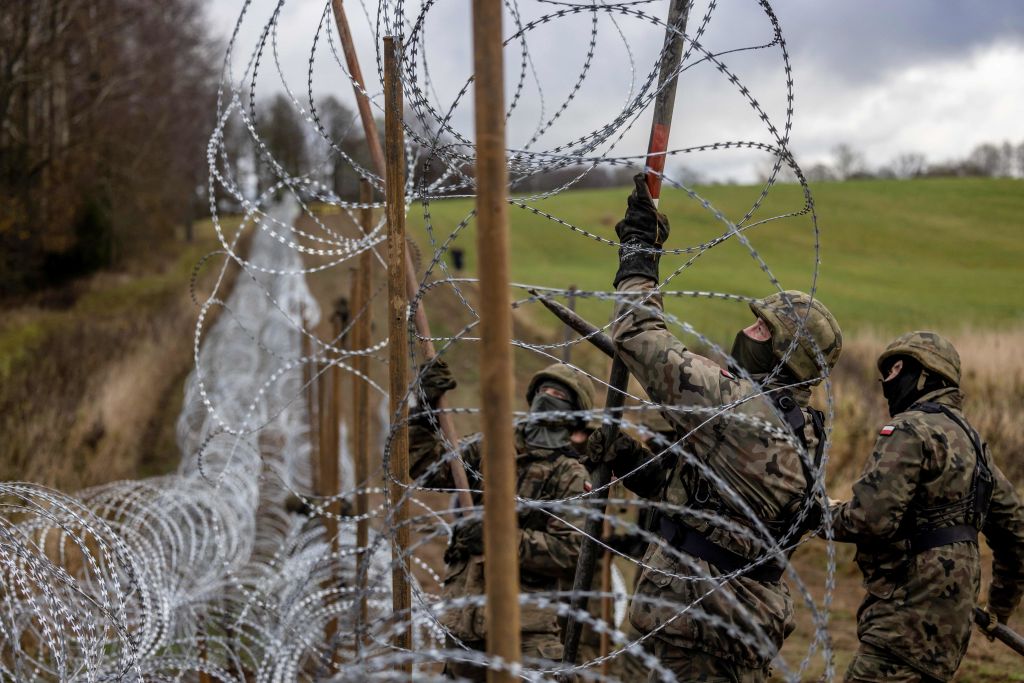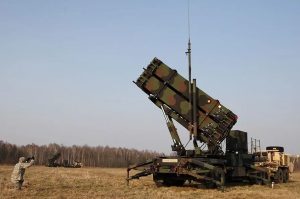Few countries know Russia’s brutal imperialism better than Poland and the Baltic states. These nations are among a handful in the West to have responded to Putin’s invasion of Ukraine with the decisiveness and clarity of vision that the security environment demands. This is why the United States, as it faces a dual threat of China and Russia, should look to Eastern Europe for inspiration.
Poland has undergone the most dramatic transformation of the bunch, increasing its defense budget and boosting the size of its military, in addition to supplying Ukraine with a vast array of materiel. Warsaw has pledged to raise defense spending to 3 percent of gross domestic product (GDP) within a year, up from 2.2 percent, which will be nearly on par with the United States. Poland will also be increasing the size of its land forces from 144,000 personnel to about 300,000 personnel. This will give Poland one of Europe’s largest armies, on par with or exceeding Germany, France, and the UK — despite it having a population tens of millions smaller.
At the same time, Poland has been sending huge shipments of arms to Ukraine, from tanks to air-defense systems to artillery. Warsaw’s support has far outstripped any other European country in sheer volume (though the UK has outspent it), helping to bolster Kyiv’s battered arsenal. For Poland, this has come at the cost of digging deep into weapons stocks, both actively deployed and in storage. Because of this and the poor security environment, Poland has made massive arms purchases this year, positioning it to have one of Europe’s most high-tech land forces. Much of this equipment is being sourced from South Korea, a growing player in the defense industry.
Now take a look at the Baltic states. All three — Estonia, Latvia, and Lithuania — are boosting their defense budgets to new highs, despite already having one of NATO’s highest defense-spending-to-GDP ratios. This infusion of cash is being used to replace materiel shipped to Ukraine, and to purchase advanced hardware. They have also sent Ukraine comparatively significant amounts of equipment relative to their size. Lithuania has sent or is in the process of sending everything from M113 tracked armored personnel carriers to Stinger anti-aircraft missiles and artillery systems. Latvia has supported Ukraine to the tune of about $300 million, and Estonia has provided support worth about $250 million.
From the beginning, Poland and the Baltic states have been at the vanguard of supporting Ukraine both materially and diplomatically. Estonia wanted to send Ukraine Soviet-era artillery way back in January, but Berlin, which previously provided the weapons to Estonia, refused (to nobody’s surprise). Poland proposed sending Kyiv some of its MiG-29 fighter fleet in the opening months of the war, though the US refused to help with the transfer. All have been staunchly opposed to pushing Ukraine prematurely to the negotiating table, and all were at the forefront of banning Russian tourists.
It is important to note that these countries have the capacity to provide so much to Ukraine in part because they have the military backing of the United States. If the US military was not pledged to defend Poland and its Baltic neighbors, it is unlikely that they would risk having yawning capability gaps in order to aid Ukraine. The US has also provided just over $300 million in military aid since 2017 ($288 million of this was from September 2022), though this is not as substantial as it sounds: the first segment of Poland’s purchase of South Korean equipment cost about $5.8 billion.
What does this tell the rest of the West? For those who question America’s pledge to defend tiny countries halfway around the world, it should put to rest any pretense that these countries do not pull their own weight. In fact, they pull more than their weight. Estonia’s aid to Ukraine, for example, constitutes about 0.69 percent of its 2021 GDP — the United States’s $54 billion in total aid is about 0.23 percent of its 2021 GDP.
Poland and the Baltic nations also show what the West should be doing about Ukraine. Rather than not-so-subtly nudging Ukraine to the negotiating table, the arms should be flowing to Kyiv. Imagine if Germany had provided Leopard 2 tanks or even the older Leopard 1 in quantity — might Kherson have fallen months earlier? If the United States had begun training Ukrainians on F-16s in March, or sent ATACMS missiles to Kyiv in June, how much more of Russia’s strike capacity could have been destroyed? Nobody knows, but if every Western nation had the same urgency and understanding that Poland and the Baltic states do, then the war and its tragedies might have ended much sooner. It is not too late for the West to follow the Eastern Europeans’ lead.
Poland and the Baltic states are also a model for facing down a menacing China. Unfortunately, if the US wants to be able to win a war against China, it needs to bite the bullet and invest. It must address issues from modernization and recruitment to the Navy’s intractable maintenance woes, and that costs money. The Eastern Europeans have the misfortune of staring their enemy in the face, which gives Poland and the Baltic states a clarity of vision that the US does not have: they cannot easily ignore the menace next door. With oceans between the US and its enemies, it is much easier for Americans to stick their heads in the sand and ignore reality.
At the very least, the free world should be thankful for the unswerving resolve of Poland and the Baltic nations. It is in large part because of their commitment to sovereignty and freedom that Ukraine is on the road to victory today, and that another iron curtain will not fall across the continent.


















